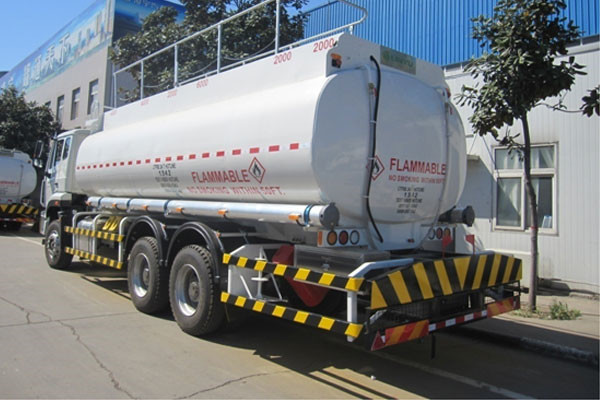Tank trucks are the main equipment for modern transportation of oil, and the importance is self-evident. Its use, cleaning, maintenance have certain operating procedures, a little careless will cause huge economic losses. After using the tanker for a period of time, it must be cleaned in time, which is not only beneficial to the tanker itself, but also protects the quality of the oil being transported. So, do you know what the tanker cleaning method is?
1. The last cleaning time is three to five years.
2. When the tanker is changed to another type of oil, it should be cleaned.
3. If the tanker leaks or has other damage, it needs to be emptied or repaired.
1, dry cleaning method
(1) Excluding tank memory oil;
(2) Ventilation to remove oil and gas in the tank, and determine the oil and gas concentration to a safe range;
(3) Personnel enter the tank to clean oil, water and other sediments;
(4) dry cleaning with sawdust;
(5) Remove the sawdust and remove the local corrosion with a copper tool;
(6) Thoroughly wipe with a mop;
(7) Dry cleaning quality inspection and acceptance.
2, wet washing method
(1) Excluding tank memory oil;
(2) Ventilation to remove oil and gas in the tank, and determine the oil and gas concentration to a safe range;
(3) Personnel enter the tank to clean oil, water and other sediments;
(4) Flush the oil and rust in the tank with 290~490Kpa high pressure water;
(5) Eliminate the flushing water as soon as possible and wipe it with a mop;
(6) drying and dehumidification by drying;
(7) removing local rust with a copper tool;
(8) Wet wash quality inspection and acceptance.
3, water tank steam cleaning method
(1) Excluding tank memory oil;
(2) Ventilation to remove oil and gas in the tank, and determine the oil and gas concentration to a safe range;
(3) Personnel enter the tank to clean oil, water and other sediments;
(4) Washing with steam, this method mainly cleans the viscous oil tank;
(5) Flush the oil with high-pressure water, drain the sewage, and dry it with sawdust;
(6) Remove the sawdust and use a copper tool to remove local rust;
(7) thoroughly remove the stolen goods with the mop;
(8) Check the quality of the acceptance tank.
4, chemical cleaning method
(1) Excluding tank memory oil;
(2) Ventilation to remove oil and gas in the tank, and determine the oil and gas concentration to a safe range;
(3) Personnel enter the tank to clean oil, water and other sediments;
(4) Washing the system and equipment with a water sprayer;
(5) pickling and rust removal 90~120min;
(6) Excluding the acid solution, rinse with water for about 20 minutes, so that the rinse solution is neutral;
(7) Excluding the sewage, do 2 passivation treatments, about 3 minutes, the second time is 8 minutes;
(8) 5~10min after passivation, then rinse with 290Kpa pressure water for 8~12min;
(9) Exclude the rinse water and wipe it with a mop;
(10) Ventilation and drying;
(11) Check the quality of the acceptance chemical wash tank.

(1) Prior to the operation of the canning, the relevant personnel shall be pre-job education on safety and related operation techniques according to the division of labor, and shall be approved after passing the examination.
(2) Clearing tank commanders must visit the site during the tank cleaning operation to solve and deal with the problems found in time.
(3) The plan and safety measures for the tank cleaning shall be carried out after approval by the supervisor.
(4) Oil stains, impurities, rust, used disposable items such as gloves and rags need to be concentrated at the designated place for proper disposal.
(5) When cleaning, it is necessary to keep the treated oil and dirt in a state of watering to prevent the oily substances from burning.
(6) The cleaned sewage cannot be discharged arbitrarily, otherwise it will cause great pollution to the environment, such as contaminated land and groundwater. Sewage needs to be discharged to a dedicated recycling facility.
(7) After the cleaning is completed, the can is dried.
The above is a related introduction to the cleaning method of tank trucks. There are dry cleaning method, wet cleaning method, water tank steam cleaning method, chemical cleaning method, etc. We can choose the appropriate cleaning method according to our actual situation. In the cleaning, it is necessary to grasp the cleaning precautions to avoid the subsequent troubles.
Address:Zhangheng Street corner Guanlin Road, Science and Technology Park, Luolong District, Luoyang City, Henan Province
E-mail:shiyk@lingyu.com
Phone:0086-379-65937678